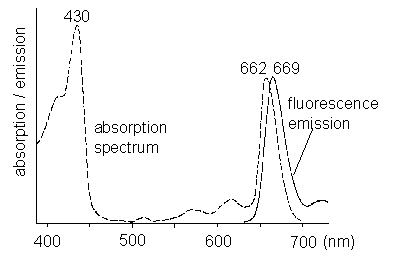
The rather large reach of absorption of photosynthetic pigments to the red has caught our attention before, when studying circular, BChl a-containing light-harvesting pigment–protein complexes from purple bacteria. Many recent models relate the low-energy states with charge transfer states. Since low-energy states are expected to be critical to function, these observations seemingly bypassing the established higher-energy mechanisms pose important challenges. Moreover, as reviewed in, additional low-energy states have been discovered in many systems with obscure origins and significance. However, being related to the well-documented red drop of the photosynthesis quantum yield, its significance would be difficult to overestimate. Furthermore, the asymmetry is shown to be environment-dependent, allowing, in principle, metal chelation and changes to nearby residues and solvent location to modulate transport in a protein environment.Īnother spectral property pertinent to functionality of chlorophylls, so far neither adequately recognized nor effectively addressed, is the shape of the long-wavelength tail of the Q y absorption band. Many of the intense modes in either absorption or emission are just not seen at all in the other spectrum, suggesting the possibility of serious failure for symmetry-based quantum dynamics models of exciton and electron transfer. While essential for straightforward quantum dynamics calculations, the observation of high-resolution spectra showed that the reality is different. That is, after appropriate normalization and reflection of (say) the emission spectrum about its origin, the two spectra are identical. The results obtained for the lowest singlet excited electronic state Q y of chlorophyll a (Chl a), bacteriochlorophyll a (BChl a), and pheophytin a indicate fundamental absorption–emission asymmetry, imposing a shift on the long-standing paradigm, which assumes that absorption and emission spectra of chlorophylls associated with the Q y state are mirror-symmetric (or nearly so). Pertinent to exciton dynamics is both the ground-state and the excited-state reorganization energy, which can be measured and partitioned into individual vibrational components using modern high-resolution techniques. Naturally, the basic absorption–emission spectral data have been around for decades-see for comprehensive reviews-yet, there are many details critical for understanding, e.g., coherent exciton transport in photosystems, a focus of many recent works. It is, thus, expected that every aspect of their optical spectra is already thoroughly studied.

The distinct role of these molecules in the utmost processes of nature relies on their unique optical and redox properties. Chlorophylls are the most abundantly found pigments on Earth, facilitating the important functions of absorbing solar energy and electron transport in photosynthetic organisms such as plants, algae, and bacteria.


 0 kommentar(er)
0 kommentar(er)
